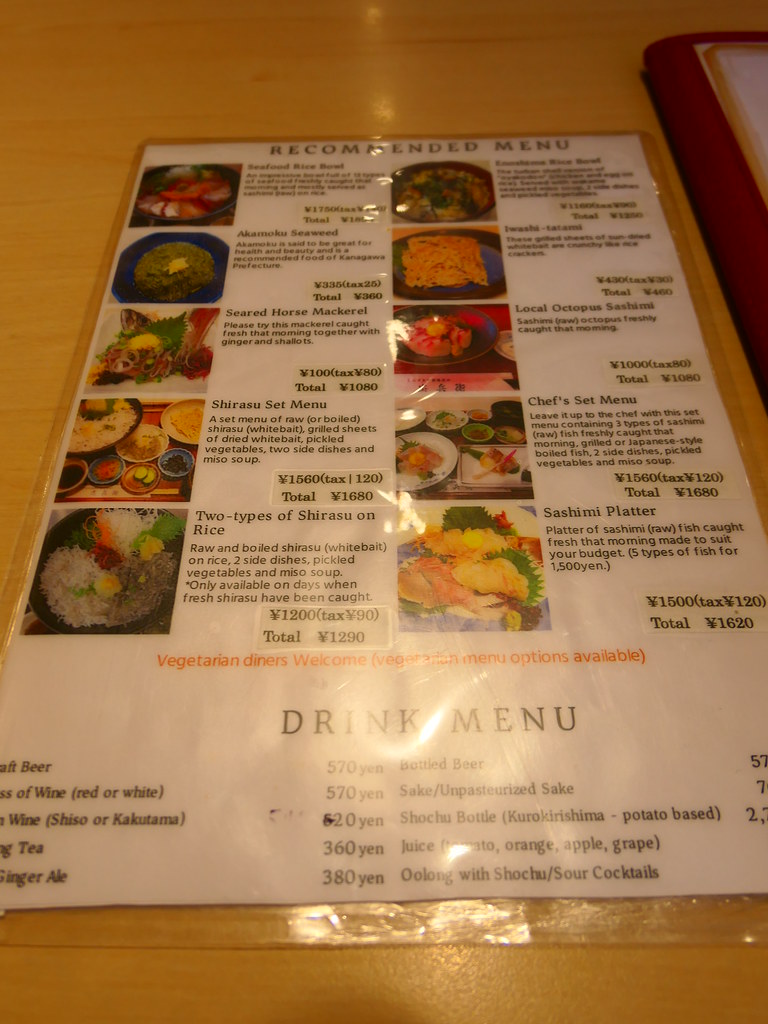
Located on Subana St., a street filled with restaurants leading up to the path to Enoshima Island is a restaurant known as Cyubei.
Not far from the famous Kamakurakokomae Station (known for being featured on the anime series “Slam Dunk”) and the beach leading to Enoshima Island, Cyubei is known for its whitebait (shirasu) and Japanese spiny lobster (ise ebi).
When it comes to Enoshima Island (in Kanagawa Prefecture), there is one ingredient that many restaurants on the island and restaurants nearby take pride in and that’s shirasu.
Shirasu is what people may know as whitebait, young, immature fish traveling together in the ocean and considered a delicacy in this region of Kanagawa.
Shirasu are usually juvenile sardines (ma-iwashi), juvenile anchovy (katakuchi-iwashi) or juvenile herring (urume-iwashi) and shirasu is consumed as raw, by boiling (shirasu) or as chirimen-jako (dried shirasu)




Shonan clams like shirasu are a specialty of Fujisawa and are large, meaty and rich.
Japanese spiny lobster is also popular in Enoshima and purchased directly from local fisherman, so Cyubei can offer it for a very reasonable price. In fact, Cyubei is the only place in the area where you can get Enoshima Japanese spiny lobster.
And of course, the famous shirasu from Shonan are purchased from Shonan-Maru (Hamano Fisheries), Kato-Maru and Horikawa Ami. Whitebait fishing is prohibited between December 15 – March 15. So, during those months of prohibition, only kettle boiled whitebait is available.
Another thing you will find is Enoshima Turban Shell. Turbans are known for the protrusions on their shell and best eaten grilled or raw as sashimi.




90% of the fish served at Cyubei are sourced directly from local fishing harbors including Katase Enoshima, Koshigoe and Fujisawa and local fisherman. Tuna, sea urchin and salmon roe can not be caught in Enoshima, so they are shipped directly from Tsukiji.
All vegetables are grown in Japan and are carefully selected produce.
And the rice used at the restaurant is Koshihikari rice from Uonuma. For those not familiar with rice grown in Japan, Uonuma Koshihikari rice is considered one of the finest rice in Japan.
Uonuma Koshihikari rice is considered to be the finest type of Japanese rice and is a region in Niigata prefecture. Koshihikari rice harvested must receive a “special A” ranking according to the Japan Grain Inspection Association. The rice has a refined aroma and soft, firm stickiness and has a delicious taste. There is Niigata Koshihikari which receives an “A Ranking” and is cheaper than Uonuma rice.
But the restaurant services Uonuma Koshihikari rice, so you are getting one of the quality rice served in Japan.
Also, visitors to the restaurant can find four in-house fish tanks with local fish and Japanese spiny lobster.






The restaurant is English friendly, providing menus in English if needed and also welcome photos. The restaurant also takes VISA, Mastercard, KB, American Express and Diners.
The restaurant is clean, customer service is great and I was well-attended to.
Because this restaurant is well-known, as much as I wanted to go for their house specialty which was the Chubei Set Menu (cost is Y4320), because it was going to be a heavy eating day at Enoshima Island, I wanted to not fill myself up so early.
so, I went with their Shirasu on Rice house specialty Y1620) which comes with spiny lobster miso soup, raw (or boiled) shirasu (whitebait) on rice, two side dishes and pickled vegetables.
The shirasu have been freshly caught by fisherman that morning. The restaurant recommends mixing ginger with their specialty sauce and pull the lobster apart in the miso soup as you eat it.
I request for a half/half for raw and boiled shirasu.







Overall, Cyubei was a place that I enjoyed eating at and a restaurant I can find myself visiting again and again. But I do recommend the restaurant for serving quality seafood, rice and vegetables. Definitely recommended!
